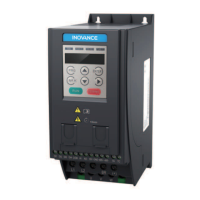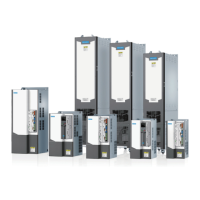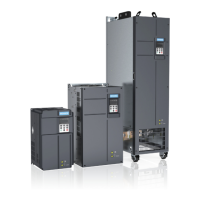Parameter Groups
‑429‑
B1-17
Friction force compensation correction coefficient
Address:
0xB111
Min.:
‑50
Unit:
‑
Max.: 50 Data type: Int16
Default:
0
Change: In real time
Value Range:
‑50.0 to 50.0
Description
In most scenarios, friction may vary with running frequency. Using B1‑07 may not
achieve ideal friction compensation effect, so it can be used with this parameter.
See B1‑18 for details. This parameter corresponds to the percentage of rated
torque of the AC drive.
B1-18
Friction force compensation curve
Address:
0xB112
Min.:
0
Unit:
‑
Max.: 3 Data type: UInt16
Default:
0
Change:
At stop
Value Range:
0: Frequency
1: Linear speed
2: Multi‑friction compensation curve 1
3: Multi‑friction compensation curve 2
Description
Five friction compensation modes are available to meet the complex friction
change rule.
0: Compensation is performed according to the running frequency. In some cases,
the friction force will change with the running frequency of the system. When this
mode is set, the friction force compensation value is determined by the following
formula: Friction compensation torque = B1‑07 x (1 + Linear speed conversion
frequency/Maximum frequency x B1‑17).
1: Compensation is performed according to the linear speed, which is similar to
Mode 0. The compensation correction is based on the linear speed, and the value
of friction compensation is determined by the following formula: Friction
compensation torque = B1‑07 x (1 + Linear speed/Maximum linear speed x B1‑17).
2. Multi‑friction force compensation curve 1. In some cases, the friction force does
not change linearly with frequency. At this time, the frequency can be converted
based on the linear speed in the multi‑section curve to obtain dynamic friction
force compensation. For details, see B1‑19 to B1‑24.
3. Multi‑friction compensation curve 2. Compared with the compensation curve 1,
the compensation curve 2 is more flexible, but more parameters need to be set.
For details, see B1‑19 to B1‑30.

